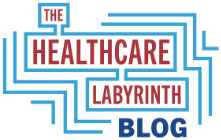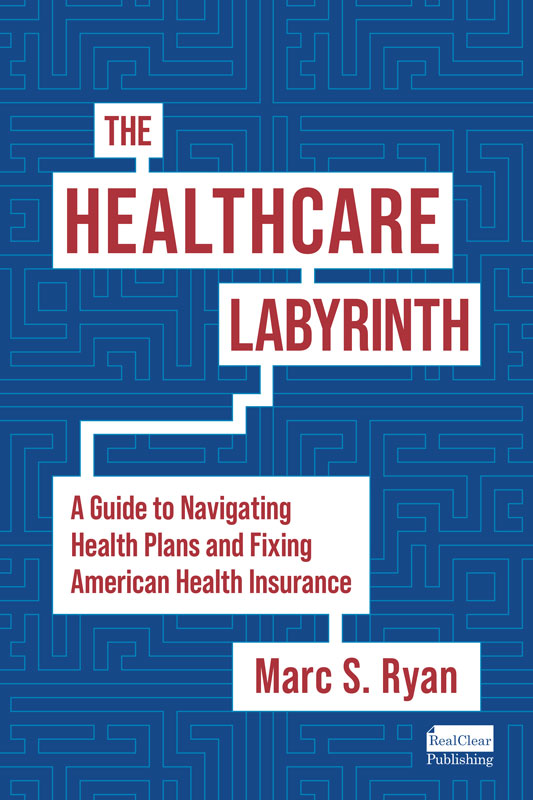Two big forces are coming together to erode coverage and increase the uninsured and underinsured
It has been on my mind of late that two forces are coming together to further erode coverage in America.
Surging utilization
The first is surging utilization. Some of it can be explained – a return to normal post pandemic utilization, increased expensive drug introductions, aging and more. But some of it cannot. While healthcare actuaries anticipate a slowing of annual healthcare growth in a few years, I think we could be in a new era of even more robust annual spending. After all, right now we are seeing cost spikes of 6% to 9% a year. This is especially true for employer and commercial coverage. When utilization spikes, as much as employers try to protect employees, more costs are foisted upon workers or coverage evaporates.
OBBBA’s impact
The second is the coverage losses in the One Big Beautiful Bill Act (OBBBA). GOP lawmakers and the president are in campaign mode and say something like this: “No one is being kicked off coverage unless they are fraudulently obtaining it or they want to be tossed!” But we know the reality is a bit different. Medicaid provider tax and state directed payment reform, new work requirements, and tighter eligibility rules will mean about 10 million lose coverage in that program. Exchange changes, including expiration of enhanced premium subsidies, mean another approximate 5 million lose coverage there.
Most recently we have seen an uninsured rate of about 8% (Q1 2024). This is well below the uninsured rate before the Affordable Care Act’s (ACA) Medicaid expansion and Exchange coverage went into effect in 2014. The uninsured rate peaked at 16% in 2010 before the coverage expansions — so Obamacare cut the rate in half.
The most recent 2024 rate is up from a recent historic low of 7.7% in 2023. The return of Medicaid redeterminations and ongoing coverage erosion helped push the uninsured rate back up. But with the OBBBA, we are clearly in store for higher uninsured rolls. The Congressional Budget Office (CBO) estimates that the uninsured rate will increase to 8.9% in 2034, a significant increase from 2023 on a higher population base.
My fear is the combination of utilization hikes and the OBBBA actually means a higher rate of uninsured than forecast. It is hard to imagine that many losing Medicaid or the Exchanges actually make the leap back to coverage.
The underinsured
But because of the fundamental lack of healthcare reform in America, we have a bigger problem with the underinsured.
Again, high prices, inflation, utilization, and overall trends eat away at most Americans’ ability to afford healthcare – even if they are covered. This fundamental lack of affordability is most seen in commercial or employer coverage as well as in the Exchanges. When price and trends are out of control, products in these lines of business tend to erode, whether it is via higher premiums, higher deductibles and cost-sharing, or reductions in benefits. Each change plays its role in making services unattainable for many. People have to make choices between paying the rent, putting food on the table, or getting a needed healthcare service. Statistics show that foregone or delayed care is a huge problem for those with no insurance, those with gaps in coverage hroughout the year, or who cannot afford to access care even if they are covered in all 12 months.
Now, some innovations in the employer world, such as pairing Direct Primary Care (DPC) and High Deductible Health Plans (HDHPs) could help. But innovation in the healthcare sector is not that great. While I support health plans, most have held on to the old ways of doing things and are quickly falling behind. Standard healthcare offerings are still the vast majority of things out there and the chopping is the only thing most businesses can do.
How extensive is the underinsured crisis? I look to a biennial survey from The Commonwealth Fund. The latest is from late 2024 (link below). Commonwealth also does the fabulous “Mirror, Mirror” reports every three years. They look at America’s healthcare system performance against other developed countries’ systems.
In its latest underinsured survey, Commonwealth finds the following:
- Unaffordability leading to being designated underinsured means at least one of the following applies: (1) out-of-pocket costs over the prior 12 months, excluding premiums, were equal to 10% or more of household income; (2) out-of-pocket costs over the prior 12 months, excluding premiums, were equal to 5% or more of household income for individuals living under 200% of the federal poverty level (FPL); or (3) the individual or family deductible constituted 5 percent or more of household income.
- More than half (56%) of U.S. working-age adults were insured all year with coverage adequate to ensure affordable access to care.
- 9% of adults were uninsured.
- 12% had a gap in coverage over the past year.
- 23% were underinsured — they had coverage for a full year that didn’t provide them with affordable access.
- Among adults who were insured all year but underinsured, 66% had coverage through an employer, 16% were enrolled in Medicaid or Medicare, and 14% had a plan purchased in the individual markets. So, as I inferred before, the biggest problem is with erosion of employer coverage.
- About 57% of underinsured adults said they avoided getting needed healthcare because of its cost.
- About 41% of working-age adults who reported a cost-related delay in their care said a health problem had worsened because of it.
- About 42% of adults who didn’t get care because of cost said it was for an ongoing health condition, 29% said it was for a new health problem, and 28% said it was for both.
- As many as three in 10 people with a chronic health problem, such as diabetes, said that the costs for prescription drugs to treat the problem had caused them to skip doses or not fill the prescription at all.
- About 44% of adults said they had medical or dental debt they were paying off over time. Nearly half with medical debt are paying off $2,000 or more. About half also said it stemmed from a hospital stay.
Where do we go from here?
Commonwealth calls for extending and making permanent the enhanced premium subsidies (I would make some anti-fraud changes, though.), covering those in states that have not expanded Medicaid, and making Medicaid eligibility easier. It also calls for reforming cost-sharing in the Exchanges and with employer coverage. It also wants aggressive utilization and price addressed.
All of these suggestions are reasonable ones. But alas, the OBBBA goes in the opposite direction by massively restricting coverage.
I have said there are three main tenets of healthcare reform:
- Ensuring affordable universal access.
- Reforming price.
- Emphasizing primary care, health, wellness, prevention, and care management — end our obsession with utilization management and prior authorization.
We are in a crisis. It is clear that the uninsured and underinsured rates will rise because of misguided policies and the lack of true healthcare reform. It is time for concerted bipartisan action from Congress.
The Commonwealth Fund 2024 Survey: https://www.commonwealthfund.org/publications/surveys/2024/nov/state-health-insurance-coverage-us-2024-biennial-survey
#healthcare #healthcarereform #healthinsurance #coverage #uninsured #underinsured
— Marc S. Ryan





